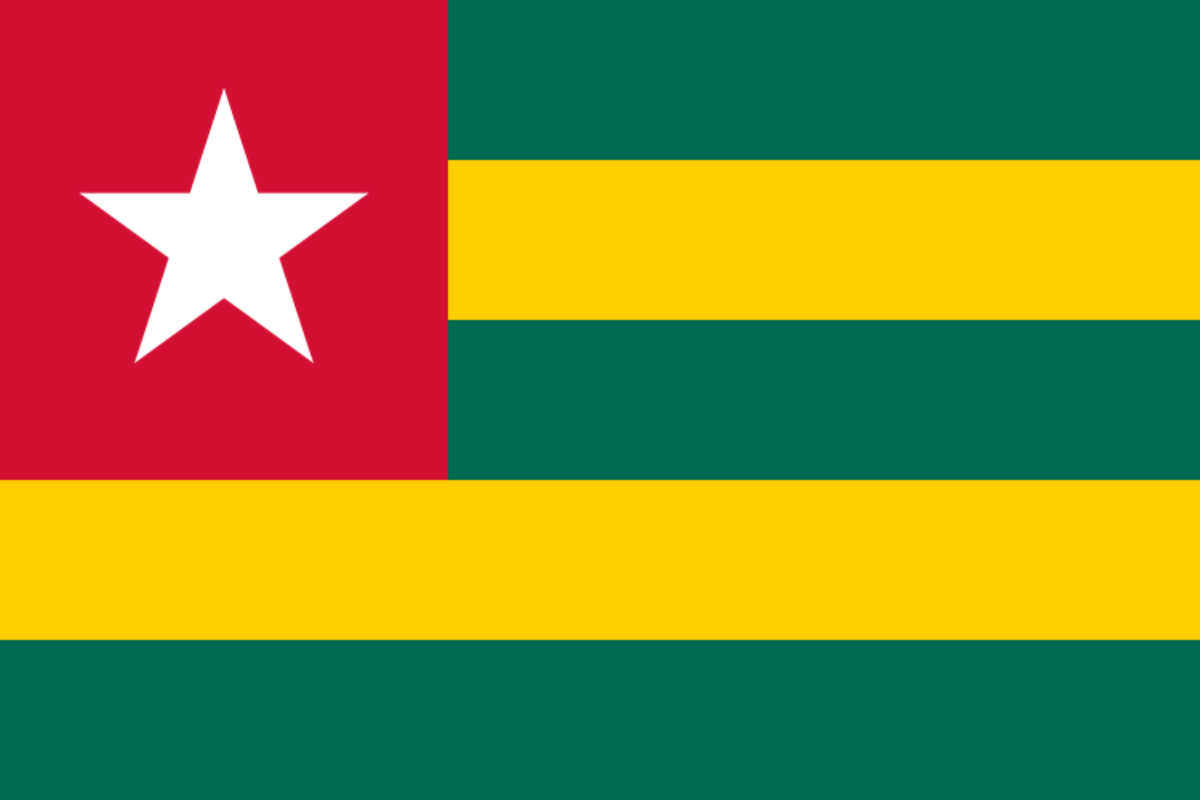The national animal of Togo is the lion. This big cat is one of the most symbolically significant animals in all of human history, and especially in Africa. The lion features on the country’s coat of arms and holds great representational significance for the people of the nation.
Lions today are virtually all found in Africa, bar one small population still holding on in India.
Naturally, then, the lion is a common choice of national animal in many African nations including Togo.
The lion holds obvious significance in many ways but is also uniquely important to the people of Togo.
Let’s find out more.

What is the national animal of Togo?
The national animal of Togo is the lion, specifically the African lion.
This is a species of large cat with a muscular, broad-chested body and a short, round head.
Perhaps their most distinguishing feature is the large mane which males have and females typically do not, though in rare cases they can also have a mane.
They were first described formally by Carl Linnaeus in his 1758 book Systema Naturae and the name of their genus, Panthera, was coined in 1816.
They are a highly social species and live in large groups known as prides.
This pride will typically consist of a handful of males and related females with their cubs.
Females typically do most of the hunting, hunting together in highly coordinated groups and primarily hunting large ungulates such as zebra and antelope.
This makes them the most social of all wild felid species, though females in a stable unit will not tolerate outside females.
They are apex predators, and also known as keystone predators; this means that they have a disproportionately large impact on the ecosystems in which they live.
They live mostly in grassland, savannah, and shrubland.
They tend to be diurnal, which is somewhat unusual among wild cats which are typically nocturnal.
That said, when threatened or pushed to it, they can become more active during the night time and sleep during the day.
Second only to tigers in size, the largest male lions can be as long as 82 inches and weigh as much as 500 pounds.
They have a large range across Africa and thus their exact morphology can vary a lot depending on the individual population in question, but they are generally not smaller than around 240 pounds for the smallest females.
Why, then, are they Togo’s national animal?
Why is the lion the national animal of Togo?
The lion is the national animal of Togo for a variety of reasons.
They are symbols of pride, strength, courage and power, all of which being very important to the people of Togo.
As mentioned, the lion is one of the most important animal symbols in human culture generally, and they have been kept in menageries since the Roman times.
They have always been most abundant in Africa during human history and prehistory, and so it is unsurprising that they should be most significant to the people of Togo.
Few animal symbols so perfectly embody strength and power.
On the other hand, though, they remain a more literal embodiment of Togolese natural beauty.
They are seen as representative of the unchecked natural beauty of Togo and its landscapes, dominating it as they do and holding so important a place in it.
Without the lion, the ecosystems and landscape of Togo would look immeasurably different.
They are, unfortunately, a vulnerable species, and this is another reason why they have been chosen as the national animal.
Bringing awareness to their plight is an important step in ensuring their continued survival and conservation, though more of course must be done.
Are lions only native to Africa?
Today, lions are found in Africa and India—though there is only a single wild population outside of Africa.
The vast majority of the lions in the world today are found in Africa.
That said, their historic range was much greater; in Africa alone they once spanned the central African rainforest zone as well as the Sahara desert.
Since the 1960s it has been extinct in North Africa except Sudan, where it was once abundant.
So, today, lions are practically only found in Africa. A variety of factors has led to the decline of their population, including loss of habitat and illegal hunting.
How many lions are left in the world?
Estimates vary a great deal, but the IUCN suggests there may be anywhere from 23,000 to 39,000 lions remaining in the wild.
At the moment, then, they are not in immediate danger of extinction, but the fact is that this represents an enormous decline from their historical numbers.
Huge efforts will need to be taken in the coming decades to ensure their survival or the populations will continue to decline and this vitally important symbolic species may be lost in the wild forever.
How those efforts will take shape remains to be seen, but certainly conservation efforts are underway already.
So, though this mighty animal faces a precarious situation over the course of the next few decades, with concerted, international effort, it can be brought back from the brink of extinction.
Few animals have played such a significant role in the minds of human beings across different cultures as the lion has, and again it is very hard to overstate the charismatic importance that this animal has had to the people of Togo.

